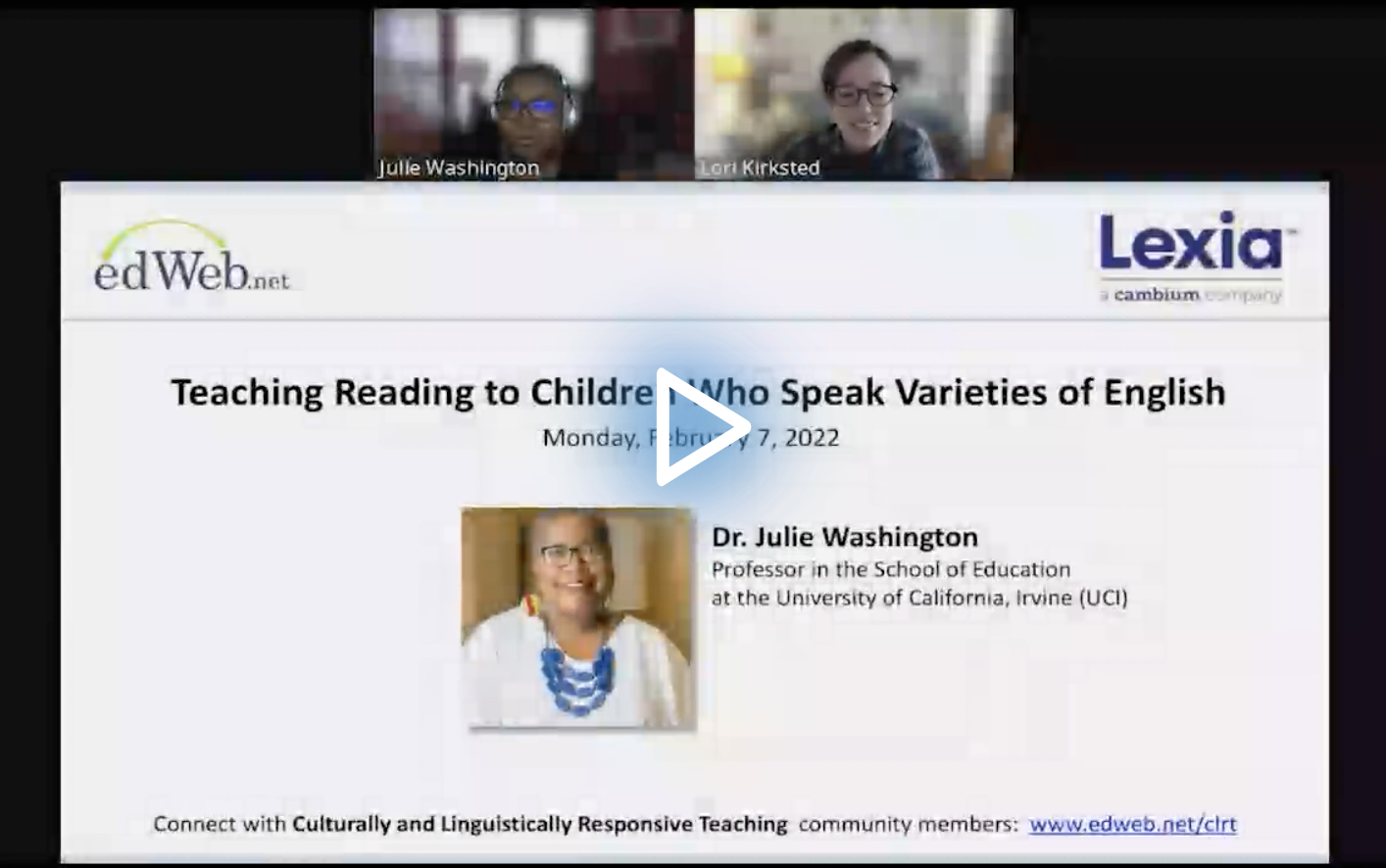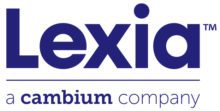Creating Inclusive Classrooms for Students Who Speak Varieties of English
Everyone in the United States speaks a dialect—not a different language, but a variation of American English. Yet when children come to school, the expectation is that they will automatically understand that they need to read, write, and speak in the academic English of the classroom.
In the edWebinar, “Teaching Reading to Children Who Speak Varieties of English,” Dr. Julie Washington, Professor in the School of Education at the University of California, Irvine, discussed why it’s important for educators to recognize and honor the dialects of their students and what educators can do to help their students.
First, Dr. Washington explained that dialects are not accents—although an accent can be paired with a dialect—and they are not a bad reproduction of the major language. Dialects are governed by their own rules as determined by the specific communities and regions where they’re spoken. Some areas of the United States might have one or two dialects, and some areas, like New York City, have several.
What educators need to understand is that the student has learned how to communicate in English, just not necessarily in the format used in school. Shaming the student and calling their dialect bad grammar ends up shaming their community, which does not inspire the students to learn.
In addition, the need to translate between their dialect and academic speech causes students to fall behind in reading and writing. They have a significantly bigger cognitive load because of the mismatch between the home and school language systems, which often leads to an increase in the achievement gap as the students don’t get the time and assistance they need to understand the mismatch.
Most important, if the students don’t learn to use the school dialect by the end of third grade, research shows that the students fall behind by at least a grade level in fourth or fifth grade.
Dr. Washington outlined four key steps educators can take to help students.
- Increase knowledge of language variation. Get to know the kids, the families, and the communities they come from. Learn what language variations they use, how they differ from the classroom dialect, and figure out how to differentiate for them.
- Respond constructively to the use of community language in the classroom. Don’t make students feel bad about the way they talk and constantly correct them. Help them learn how to access the school materials while also allowing them to express themselves in their native dialects.
- Use culturally responsive materials. The people in the materials should look and live like the kids in front of you. Kids think something is wrong with them because the books never reflect them or talk about their experiences. When they can recognize themselves in the images and situations discussed in the text, they feel valued and become more invested in their education.
- Acknowledge the impact of being bidialectal.
Don’t eliminate their community system, but extend their knowledge to include the school system. The students’ home languages are a strength, but if we take them away at school, then we remove their strength.
Finally, Dr. Washington said kids need more time to practice reading—not instructional time, but just time to read. They need more exposure and more access to books so they can make the connections to extend what they know to what we want them to know.
Learn more about this edWeb broadcast, “Teaching Reading to Children Who Speak Varieties of English,” sponsored by Lexia Learning.
Join the Community
Culturally and Linguistically Responsive Teaching is a free professional learning community that strives to help today’s teachers meet the unique instructional needs of culturally and linguistically diverse students.
Lexia® Learning, a Cambium® company, is one of the most impactful and highly respected reading-technology companies in the world. Founded over 35 years ago, Lexia’s research-proven programs help educators deliver personalized reading and language instruction for millions of K–12 students across the world.
Blog post by Stacey Pusey, based on this edWebinar






Comments are closed.